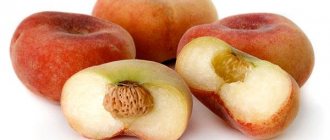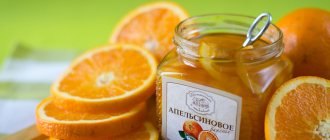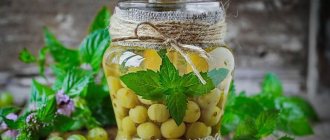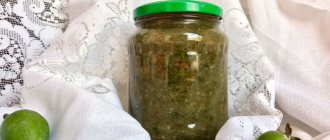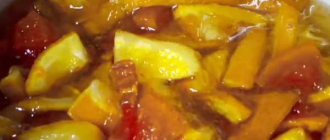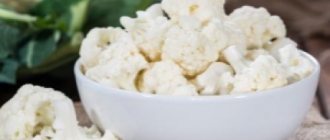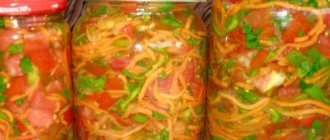The fig tree (fig tree, fig tree) is a southern plant, the fruits of which are not classified as either a fruit or a berry due to the abundant accumulation of small seeds inside the fruit. Because of these seeds, the pulp of ripe fruits crunches pleasantly on the teeth, and the rich aroma is reminiscent of burnt sugar and honey. The fruits are consumed fresh, and they are also used to make various preparations - dried, canned, prepared syrups, sauces, and also made fig jam. It turns out just as tasty as quince jam, another southern fruit.
The fig tree is one of the most ancient plants; mention of it can be found in manuscripts that are more than 5 thousand years old. In Ancient Greece, for example, there was a special cult of figs. He was revered and considered a sacred symbol of love, fertility and fertility. They filled baskets with them and gave them to newlyweds with wishes for a rich life and many heirs.
During the time of Alexander the Great, soldiers were given a potion made from figs, herbs and nuts to replenish their strength after a battle.
And there is an explanation for this, because fig fruits contain a large amount of vitamins A, K, C, E, P and group B. They are considered record holders for potassium content, and are also rich in calcium, magnesium, phosphorus, sodium, iron and zinc. The fruits of this ancient plant are used as an antipyretic, analgesic and anti-inflammatory agent. They are recommended for the treatment of the cardiovascular and nervous system, hypertension, anemia, osteoporosis, arthritis, acute respiratory infections, mental and physical fatigue, and to combat hangovers.
This is such a wonderful southern fruit and, of course, housewives are trying to make winter preparations from it. One of the preparations is a tasty and healthy delicacy - fig jam, which can be prepared in different ways.
How to make fig jam
Fresh figs have a sweet, slightly berry taste. It is very difficult to transport such fruits. To fully enjoy their extraordinary taste, it is better to grow your own figs. Regardless of the region, you can find dried figs. It has a brighter flavor, more like a nut or fortified wine, depending on the variety. Figs go well with spices, so they are often used when making jam.
Before you start making fig jam, you need to wash it well and trim the tails with scissors. It is best to take cooking utensils from stainless steel. Jam is usually cooked in several stages. This allows you to get a richer taste and preserve the healthy composition.
Attention! Figs are very useful for inflammation of the respiratory system; they have diuretic, laxative, and antithrombotic properties. Improves the microflora of the digestive tract, useful for anemia, kidney and liver diseases.
How to make fig jam according to the classic recipe
The good thing about fig jam is that it requires little sugar to make. And you don’t have to be afraid that a delicious delicacy will harm your figure.
Ingredients:
- figs (fresh) – 1 kg;
- vinegar (balsamic) – 130 ml;
- granulated sugar – 350 g;
- pepper (allspice) – 3-4 peas;
- cinnamon – 1-2 sticks;
- anise - 1-2 stars.
Peel the figs from the tails, cut into four parts and place in a saucepan with a thick bottom. Add all other ingredients and mix well so that the vinegar and granulated sugar are evenly distributed over all the fruits. Place this whole mass on the stove and bring to a boil, then reduce the heat to medium and cook for 40 minutes.
To make sure that the syrup is ready, separate one spoon of the sweet mass and refrigerate for 10 minutes. If it hardens during this time, you don’t have to continue cooking - the jam is ready. Otherwise, you need to boil it a little more and check again.
The finished jam should be cooled for 10 minutes, then blended with a blender until smooth. While still hot, pour it into sterile jars and seal. Fig jam prepared in this way can be stored until the next fruit ripening season.
Fig jam for the winter
I was thinking in my spare time that everything, well, almost all of my winter preparations are done spontaneously, not planned, and what is most surprising is that what is actually planned is actually not possible to do. And what’s also interesting is that later you get such pleasure from the fact that something happened that was not planned.
You probably don't understand what I mean. Yes, I myself was confused about what I wanted to say. It may not be easy to say, but the correct attitude, which has not failed me for the last twenty-five to thirty years, has become second nature to me in life and I have acquired new habits, based and developed on observation and making, as it turns out later, the right decision.
And now I want to say what I meant. Quite recently, well, a month ago, I unexpectedly prepared apricot jam for the winter when, in fact, these at that time quite expensive fruits had just appeared on the shelves of vegetable stores and, seeing next to the beautiful fruits, unsightly and limp, put aside in an additional box, my the balls in my brain began to move quickly, and not paying attention to the set price for the product, I calmly lowered it to the one I needed, under the simultaneously indignant and delightful and at the same time satisfied and mysterious look of the young farmer, who, after thinking, accepted my conditions, after when I told him that his goods would spoil in a couple of hours and no one would even think about buying limp apricots this season, since they had not really been eaten yet.
Well, something similar happened today. Yes, I remember a similar case with white cherry jam, and I also recently traded in red ones, and another interesting case with expensive local, but slightly beaten tomatoes. Well, I’m saying that after the collapse of the Soviet Union, I began to develop new habits to please myself and the sellers of agricultural products.
And I noticed such a thing that fruits and vegetables have this peculiarity: imagine, they come, well, to put it mildly, in a non-marketable form at the peak of their season and when they first appear on sale they are still very expensive. Well, what can you do - it’s their natural nature (unfortunately for farmers and to the delight of us, city dwellers), to deteriorate when this time comes.
And it never occurs to anyone to prepare something for the winter, at the very beginning of the appearance of fruits or vegetables, well, since in general the person has not really eaten them yet. And now, taking advantage of the fact that the product can spoil and will be to the detriment of the farmer, I, with the gaze of a panther, somehow spontaneously pay attention to unsightly products at the beginning of their season.
I’ll tell you moreover, at the peak of the sunset season, the same farmers, knowing that it has arrived, negotiate with each other and set such a price that you begin to regret that you didn’t take advantage of the opportune moment at the very beginning of their going on sale. One year comes to mind when, during the sunset season of peppers and tomato lecho, some kind of herb - parsley cost 10 times more than the tomatoes and peppers themselves, without which a tasty preparation would not be possible. And then, even if you bite your elbows, you buy this hated weed, there’s nowhere to go.
Well, after all my preamble to the jam, I want to say that today I went to the market to buy groceries and suddenly, once again, my gaze fell on a box with overripe, useless figs.
Firstly, I was generally surprised that figs had already appeared, since it was only the second ten days of July, and they, in fact, are considered an autumn fruit. Secondly, the instinct of a predator immediately began to work in me, which developed in the era of underdeveloped capitalism, that luck in the form of an unplanned jam floats into one’s hands and not to take advantage of it, to put it mildly, is wrong, to put it bluntly, it is stupid.
So, once again I negotiated such a low price that for comparison I will say that granulated sugar is 1.3 times more expensive than the figs I bought. When the farmer handed me a bag of fruit with a surprised look, he couldn’t help but ask what I would do with them and he decided to answer for me: “will you dry it?” I told him, “no, I’ll roll it into jars in the form of jam.” He, closing his mouth, finally calmed down, having learned what this woman would do with this “non-marketable product.”
Well, that’s it, friends, I talked a little about my nature and the fact that I immediately bought granulated sugar on the way and quickly, upon returning home, immediately began making fig jam.
The site has a recipe for fig jam, which is prepared from another, smaller variety of this delicious fruit with a delicate aroma.
In a nutshell, I’ll tell you here my actions in general, and below I’ll show them in photographs.
The figs must be thoroughly washed, drained in a colander, spoiled areas removed, cut in half (if large), placed in a pan (when preparing for the winter, I returned to using old aluminum pans, since stainless steel, it seems to me, leaves an aftertaste of iron, but the choice In any case, I don’t recommend cooking in enamel - sweet fruits will quickly stick to the bottom and an unpleasant burnt taste will appear, even with constant stirring - which is simply impossible, if not deadly).
Today I prepared jam in three stages, like jam: that is, I boiled it over medium heat for the first time for 5 minutes from the start of boiling, turned off the stove and left the brew for 4 hours, the second time I also boiled it for 10 minutes after boiling, turned it off, and cooked for the third time finally, adding granulated sugar, and it must be adjusted to taste, that is, after 25-30 minutes you need to take a little onto a plate and taste it when it has cooled and, if necessary, add more, which I did and showed in the photo.
And all because you can’t guess the taste of the fruit in its raw form, and so I first added a kilogram of sugar to 2.5 kg of figs, as in the case of apricots (and even 600 g, since the apricot was very sweet), but it seemed to me not enough and so I additionally poured another 500 g into the pan. I repeat, it all depends on the taste of the fruit itself. Well, that’s it, I think I’ve said it all (and even more...:), and now I’ll move on to the photo description.
Recipe for fig jam with lemon
The recipe for making fig jam with lemon (see photo) is not only interesting in itself, but also useful. Citrus fruits enrich fig jam with vitamins, organic acids and other active substances.
Ingredients:
- figs – 1 kg;
- water – 0.1 l;
- lemon (small) – 2 pcs.;
- granulated sugar – 0.6 kg;
- cloves – 4 buds;
- vinegar (balsamic) – 2 tsp.
Cut the prepared fruits crosswise by 5-6 mm, stick clove buds into the recesses of several fruits. Cut the lemons into thin rings, get rid of the seeds, as they will give a bitter taste.
Mix the juice that leaks out when cutting citrus fruits with vinegar and half a cup of water. Then add sugar, lemon slices, bring to a boil and cook over low heat for 10 minutes, remembering to stir and skim off the foam.
Add figs to the syrup with lemons being prepared, stir and bring to a boil again. Cook over low heat for no more than 3 minutes and set aside for several hours. Then repeat everything again, in total there should be 3 stages of cooking with figs. Distribute the finished jam among the jars and roll up.
You can make fig jam with lemon without cooking. In this case, it is enough to grind both ingredients in a meat grinder or grind them with a blender. Add sugar, mix and place in sterilized jars. Place in the refrigerator.
Homemade fig jam with orange
An unusual homemade preparation that will give you excellent taste and improve your mood. For jam you will need figs, orange and sugar.
Cooking time: 6 hours.
Cooking time: 50 min.
Servings: 3.
Ingredients:
- Figs – 0.6 kg.
- Sugar – 0.3 kg
- Orange – 1 pc.
Cooking process:
1. Wash the figs, dry them, cut each fruit in half.
2. Cover the figs with sugar. Wash the orange, cut off the zest and squeeze the juice out of it.
3. Add orange juice and zest to the figs, stir and leave for 3 hours.
4. Place the container with figs on the fire, bring to a boil and continue to cook over low heat for 15-20 minutes. Using a spoon, periodically skim the foam from the surface of the jam.
5. Place the hot fig and orange jam into sterilized jars and cover them with clean metal lids. After the seams have cooled, transfer them to a cool place for storage.
Bon appetit!
Report a bug
Recipe for making dried fig jam for the winter
Ripe figs are a perishable product, so they most often reach the shelves in dried form. But this is not a hindrance to making delicious, nutritious jam from it.
Ingredients:
- figs (dried) – 1 kg;
- granulated sugar – 0.75 kg;
- water – 1.25 l;
- lemon juice – 40 ml;
- walnuts – 200 g;
- pine nuts – 50 g;
- sesame – 150 g;
- anise – 1 pc.
Pour water, citrus juice into a saucepan, add granulated sugar. Bring to +100 degrees over high heat, stirring with a wooden spoon. Then reduce the gas and cook without a lid for about 10 minutes, no more. Pre-prepare the figs. Wash, dry, cut into quarters. Add to the boiling syrup, add anise there. Cook for half an hour, uncovered, over low heat.
In the meantime, you need to prepare the sesame seeds and nuts. Fry for two to three minutes in a dry frying pan over medium heat, stirring with a wooden spatula. The seeds should take on a golden hue and begin to emit an aroma. Cool the roasted sesame seeds. Do the same with walnuts, first chopping them. Use pine seeds raw in the recipe.
Place the sesame seeds and nuts into the pan, mix everything well and keep on the fire for another minute. Then put the finished jam into jars and store in the refrigerator. Pre-sterilize storage containers. The jars must be clean, they must be held over steam, in the oven or microwave for sterilization.
Fig jam - a simple recipe
This recipe is truly the simplest. For this fig delicacy, you only need the fruits themselves, sugar and a little water.
Ripe fruits, depending on the variety, may have a dark blue, yellow or light green color.
Ingredients:
- fresh figs - 1 kg
- sugar - 3 cups
- water - 1.5 cups
Figs are a perishable product. When purchasing, pay attention to the peel of the fruit. It should be intact and uniform in color. Choose firm (not too soft and not too hard) fruits without a sour odor.
How to cook:
- Wash the figs and trim the stems. If the fruits are strong, with a thick skin, then you can pierce them in several places with a toothpick.
- Pour sugar into a saucepan, pour in the required amount of water, and place on the stove. With constant stirring, dissolve the sugar and bring it to a boil.
- Place figs in boiling syrup. Once boiling, reduce heat and simmer over low heat until done. This usually takes about 1.5 hours, during which time the whole fruits are well boiled and soaked in sugar syrup.
- While the jam is preparing, prepare the jars and lids. They need to be washed well and sterilized in a way convenient for you.
- Place the finished delicacy hot into jars and roll up the lids.
It can be stored at room temperature in a dark place until the next harvest.
To prevent the delicacy from becoming sugary during storage, you can add a few drops of lemon juice or a little citric acid during cooking.
Fig and orange jam recipe
Dried figs have a somewhat cloying and harsh taste. Therefore, fig dishes are often prepared with orange to moderate the sweetness of one and the acidity of the other. In addition, the time for full ripening of both types of fruits is approximately the same.
Ingredients:
- figs – 1 kg;
- oranges – 250 g;
- granulated sugar – up to 500 g.
In the evening, finely chop the oranges and sprinkle with sugar. Overnight the fruit mass will release juice. The next day, grind the figs in a meat grinder, mix with chopped oranges and the remaining portion of sugar. Cook until done.
Harm and contraindications
Fig jam is a truly unique product that can support the human body, give it strength and treat diseases. But, unfortunately, this is also not an ideal product without contraindications. There is damage, even minimal damage. This includes prohibiting the use of the treatment by people with the following diseases and disorders:
- diabetes;
- allergies and individual intolerance to the product;
- obesity and tendency to be overweight;
- intestinal disorders and intoxications;
- caries;
- gout and pancreatitis.
If a person has no contraindications, a daily dose of 30-50 g is enough to experience all the beneficial properties of a product made from figs.
Delicious fig jam with lime and plums
You can make jam according to this recipe in the fall, when plums and figs finally appear on the same counter.
Ingredients:
- figs – 0.5 kg;
- plum – 0.5 kg;
- lime – 1 pc.;
- water – 50 ml;
- granulated sugar – 0.5 kg;
- cloves (powder) – 1 tsp;
- cinnamon (powder) – 1 tsp;
- gelling mixture – 1 tbsp. l.
Remove stems from figs and pits from plums. Squeeze the juice from the lime, first removing the zest. Pour water into a saucepan, add finely chopped fruits and zest. Cook covered over low heat for half an hour, mashing the fruit. They should give juice and boil down. Then add the remaining ingredients: juice, spices, gelling composition (with pectin, gelfix). Boil for a few more minutes and pour in all the sugar. Cook until thickened for another half hour.
Recipe for fig jam with lemon and cognac
Jam prepared according to this recipe will undoubtedly appeal not only to children and women, who, as a rule, have a sweet tooth, but also to men.
Ingredients:
- figs – 1 kg;
- granulated sugar – 1 kg;
- cognac – 0.2 l;
- lemon (juice) – 1 pc.
Prepare the fruits by pricking them with wooden toothpicks. Place in a single layer in a wide-bottomed pan or jam bowl. Sprinkle an even layer of sugar on top. Cover the pan with one layer of gauze and leave for 3 days. The fruits should release juice.
Then add citrus juice, a glass of cognac or brandy, without stirring. Bring the mixture to a boil and reduce heat to low. Without stirring, cook for 40 minutes. Turn off the gas and set the pan off the stove for a day to steep. The next day, bring to a boil again and cook for another half hour, also without stirring. Cool the finished jam and pour into jars.
Jam “Exotic”
This recipe was developed by professional chefs. The finished product is considered an ideal complement to hard cheese snacks. If desired, lemon can be replaced with sour berries, such as red currants or cranberries.
Output: 0.8 l
Ingredients:
- dark figs – 1 kg;
- granulated sugar – 0.7 kg;
- lemon – 1 pc.;
- honey – 100 g;
- bay leaf – 6 pcs.
Cooking technology:
- Cover the figs with sugar, add lemon juice, honey and bay leaf, put on the stove, bring to a boil and cook for 30 minutes.
- Place the cooled dough in the refrigerator for 8 hours.
- Let the jam boil and cook for another 5 minutes. Remove bay leaves.
- Place the hot dessert in sterilized jars, roll it up, turn it over onto the lid and leave it wrapped for gradual cooling.
Children may not like such an unusual dish, but adult gourmets will appreciate its taste in combination with savory cheeses and dry wines at the festive table.
You can also get original ideas for preparing fruit for the winter from the article about pickling plums on our website.
Fig jam with lemon and rosemary
Another recipe for fig delight. Toast with this jam and cheese is a great way to start your day.
Ingredients:
- figs – 0.5 kg;
- granulated sugar – 0.3 kg;
- rosemary (sprigs) – 3-4 pcs.;
- lemon (juice) – 1/2 pcs.;
- lemon (zest) -1/2 pcs.
Prepare the fruits as usual, cut into four parts. Tear off the rosemary leaves, mix all the ingredients together and leave overnight. Cook for 5 minutes, up to 4-5 times.
Attention! During breaks, the fruit mass should cool down.
Fig jam with walnuts
Preparing this unusual delicacy is not difficult.
Ingredients:
- figs – 1 kg;
- nuts (chopped) – 5 tbsp. l.;
- granulated sugar – 1 kg;
- lemon – 1 pc.;
- ginger.
First of all, you need to prepare figs, nuts, and ginger. Peel the fruits from stems and stalks, pierce them on different sides. Dry the nuts (an oven or frying pan will do) and chop them with a sharp knife. Ginger root, just a little, grate.
Next, you need to stuff the figs with nuts. To make this more convenient, it is better to take ripe, soft fruits. Place jam in a bowl for cooking in one layer, cover with granulated sugar, zest and grated ginger. Leave it like this until the juice comes out. Cook the jam twice for half an hour, letting it cool in between. 5 minutes before the end of cooking, add chopped lemon or a pinch of citric acid. Without waiting for the jam to cool, pour it into jars.
Fig jam without sugar
Since figs are very sweet, jam can be made from them without adding sugar. This delicacy will please those who watch their figure. The process is, however, long, but the result is worth the effort.
Ingredients:
- figs
Preparation:
- Wash the figs and cut into cubes. Place in a saucepan.
- Fill with water so that it covers the berries.
- Bring to a boil. Reduce heat to low. Cook for 4 hours.
- Cool the fig mass. Leave for a couple of hours.
- Then boil again and cook for 4 hours over low heat.
- In total, the cooking process must be repeated 3 times.
- Cool the jam and put it into jars.
Figs are not only tasty, but also very healthy. It improves digestion, prevents the development of cancer cells and can be a healthy treat for those who need to limit themselves on sugar.
Original recipe for fig jam with pears and cardamom
The fig jam recipe can be varied with additional ingredients. This time it's pear and cardamom.
Ingredients:
- figs – 0.3 kg;
- pear – 1 kg;
- granulated sugar – 0.6 kg;
- gelling mixture - according to instructions;
- water – 0.8 l;
- cardamom – 4 pcs.
Boil syrup from sugar and water, add chopped fruits and spices. Cut the figs a little larger than the pears. Cook until the volume of water is reduced by a third. Add pectin or other gelling agent.
Attention! When the jam thickens, stop cooking.
Fig jam for the winter with nuts
Remember, at the beginning of the article it was said about a useful drug from the times of Alexander the Great? Why not use the wisdom of our ancestors and prepare something similar. In this case, we will not add herbs, but will add nuts to the figs. You will get a real oriental sweetness.
Which nuts are best? It all depends on your tastes and preferences. It turns out delicious with walnuts, hazelnuts, and almonds. You can experiment and cook a delicacy from a nut mixture.
Product composition:
- figs - 2 kg.
- sugar - 1.3 kg.
- water - 200 ml.
- peeled hazelnuts (any other nut) - 120 gr.
Prepare according to the recipe:
- Wash the figs well, cut off the stalk, cut the fruit in half or into quarters, depending on the size of the fruit and your desire. Place in the container in which you will prepare the jam.
- In a separate pan, boil the syrup from sugar and water. Pour hot syrup over the fig tree fruits. Place on the stove, bring to a boil, skim off the foam, and simmer for 3-5 minutes. Let cool.
- Lightly toast the peeled hazelnuts in a dry frying pan or in the microwave. Place the nuts in the jam and boil for 5 minutes. Let cool completely.
- Boil the delicacy a third time. This time, determine the time yourself, depending on how thick you want the workpiece to be.
- We put the hot jam into dry jars, which must be sterilized in advance. The lids must also be sterile. We tighten the lids and after the jars have cooled, we send them for storage.
If you wish, you can prepare this preparation with whole fruits without cutting them into pieces. You can make a treat with a surprise by putting a nut inside the fruit and making jam in this form.
How to make fig jam for the winter in a slow cooker
Today, almost every home has a multicooker. The presence of such an assistant in the kitchen will greatly simplify the work of any housewife.
Ingredients:
- figs – 1 kg;
- granulated sugar – 0.5 kg;
- lemon (juice, zest) – 2 pcs.;
- cinnamon (powder) – 1 tsp;
- cardamom – 1 tsp;
- cloves (powder) – 1 tsp;
- ginger (powder) – 1 tsp.
Cut the fruits into small cubes, place in a multicooker bowl and cover with sugar. Wait until the fruits release their juice; this will take at least an hour. Then add zest, juice, spices. If very little juice comes out, add a little water. Run the multicooker on High Pressure mode for 15 minutes.
How to store fig jam
If a recipe calls for adding a little sugar to fig jam for the winter, it is best to store it in the refrigerator. For workpieces that must stand for at least six months under normal conditions, granulated sugar should be added twice as much.
The most suitable places to store jam are:
- pantry;
- basement;
- bottom shelf of the refrigerator;
- locker on the insulated balcony.
Attention! Any other suitable place in the apartment is suitable for storing jam. The main thing is that it is removed from radiators, the fireplace, and inaccessible to sunlight.
